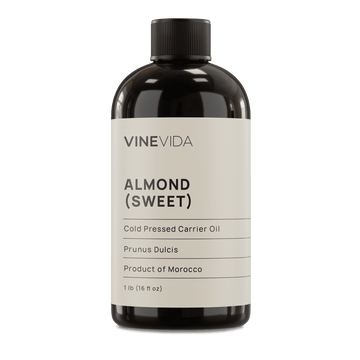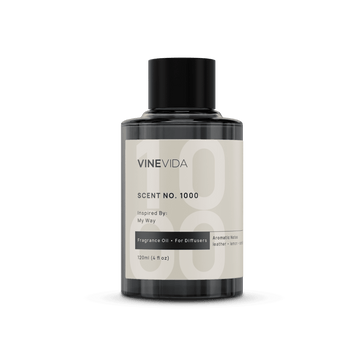Candle making is a passion for many and can be a great hobby to enjoy during your leisure time. Creating something with your own hands can bring feelings of satisfaction and fulfillment, and candles offer the added benefit of creating a cozy atmosphere in which to relax.
The number of personal touches you can add to your candles are endless. Feel free to mix and match your favorite scents and colors to come up with a candle that perfectly reflects who you are.
If you are new to DIY candle making, don’t worry! With our professional candle making tips, beginners will be making perfect candles in no time.
Candle making can be a fairly easy task once you have your complete DIY candle making kit supplies. In this article we will cover all the required tools including the equipment and materials you will need to make candles at home, keeping the process fast and easy with our candle making tips!

Consider Candle Making Tips: Top 10 Candle Making Tips for Beginners your comprehensive guide to at-home candle making. With our professional guidance, you’ll soon be making DIY candles just like a pro!
Top 10 Candle Making Tips for Beginners
Learning the process of DIY candle making is relatively easy, however, without proper guidance you are bound to face various challenges.
Is the wick correctly placed?
Are those air bubbles in my candle?
Will the wick burn properly?
Did I put enough essential oil in for scent?
All these questions are common for beginners, we are here to answer them for you!
Here is our list of 10 candle making tips for beginners, in order to help you make your first handmade candle!
1. How to Get Started!
One of the biggest issues with DIY candle making for beginners is that most people do not know where to start! Don’t worry, this is common when trying to do something you have no prior experience with. In this section we will cover the things you need to consider before getting started.
First, it is important to decide which type of candle you wish to make. Will it be small Tea Lights or Votives in glass jars? Or maybe you would prefer to make Pillars and Tapers out of molds, or maybe even just your regular DIY Container Candle.
Once you’ve chosen which type of candle you want to make, you get to decide how you want to customize them. Options include essential oil fragrance, color, and other decorations such as dried flower petals.
Be prepared by researching different options, reading up about the process if you have no prior experience in DIY Candle Making, and following our candle making tips!
2. Know Your Tools and Ingredients
Before beginning this venture of DIY candle making for beginners, you will need to have a DIY candle making kit.
Here is a list of the tools and candle making ingredients you will need to have on-hand:
Equipment/Tools
- A Double Boiler – to melt the wax of your choice
- A Microwave Oven – to melt the wax of your choice
- A Heat Resistant Bowl/Microwavable Bowl – to put over the double boiler or to put in the microwave depending on which you prefer to use
- Wooden Stirring Stick – to mix the wax while melting
- Measuring Scale – to measure the wax
- Electric stove/Induction/ Hot Plate – heat source
- Thermometer – to measure the temperature of the wax
- Scissors – to trim the wicks
Materials
- Wax (Paraffin, soy, beeswax, etc.)
- Small heat-proof glass or ceramic jar (Mason jars, old candle-holders)
- Pre-made wax wicks that fit your jar
- Fragrance (Essential Oils)
- Color/ Non-toxic crayons (Optional)
- Dried flower petals (Optional)
- Chopsticks/ Clothespins/Popsicle sticks to help hold the wick in place
3. Choose the Right Wax for Your Candles
One of the first choices you have to make in DIY candle making is which wax you want to use. Wax is a primary component in candle making and there are numerous options to choose from!
- Paraffin Wax: Paraffin is the most commonly used wax in candle making, especially in commercial settings. It is a synthetic wax, which makes it comparatively cheaper than other options. It is a good choice for many types of candles, including pillars, votives, containers, tealights, etc. However, many people avoid using paraffin as it not of natural origin and is known to give off carcinogens when burning.
- Soy Wax: Soy wax is a 100% natural wax derived from hydrogenated soybean oil. It is an ideal pick for DIY candle making as it holds scent and is easy to handle. Furthermore, it is perfect for container candles, votives, tealights, jars, tarts, etc. Keep in mind, soy wax is not a good option for pillar candles.
- Gel Wax: Gel wax is not actually a wax. It is a synthetic combination of resin with mineral oils. It is almost the same in its functions as other waxes, however, it is transparent and jelly-like. You may use different non-flammable decorations in gel votives or container candles!
- Beeswax: It also is a natural wax, though slightly more expensive than soy or paraffin waxes. It is undoubtedly the best option for almost all types of DIY candle making as it is available in sheets, and can be mixed with other types of wax depending on your purpose. Pillars, votives and containers candles can all be made easily with or without melting the beeswax! For more beeswax candle making tips, keep following our blogs.
- Palm Wax: Palm wax is another natural wax, derived from palm oil. It is harder and more brittle than soy wax, making it ideal for pillar as well as votive candles.
4. Know About the Wicks
Wicks are the core of any candle, and there are many different types to choose from. You need to determine which wick is perfect for you, depending on various factors.
The factors that need to be considered while choosing the wicks are as follows:
- Wax Type
- Size and shape of the candle
- Type of the candle
- If you wish to use fragrance
- If you with to use coloring agents
Here are the different types of wicks that can be added to your DIY candle making kit.
Wood Wicks
These are coreless wicks made from wood. They are a good choice for soy and paraffin-based container candles, but not suitable for pillar candles or votives.
Paper-core Wicks
These are made from natural fibers, and burn very hot and intense. This means they are not ideal for candles with added fragrance. They are, however, a good option for a non-scented pillar, votive, and container candle.
Zinc-core Wicks
These wicks are the most commonly used. As with all cored wicks, they have a tendency to burn uniformly with the wick remaining steady due to its hard core. Zinc-core wicks are best when making medium-sized paraffin and gel candles.
HTP Wicks
These are coreless, braided cotton wicks. They are good for preventing mushrooming and soot. HTP wicks are an excellent choice for soy, gel, and paraffin wax candles.
CD Wicks
CD wicks are a favorite among those who want to make scented candles. The base makes for a smooth and consistent burn in all waxes, and is perfect for a pillar, votive, or container candle.
ECO Series Wicks
These are designed specifically for natural wax candles, but also work well with paraffin wax. These burn with lower soot and smoke levels than paper-core ones due to their unique braiding. These are good choices for both pillar and container candles.
5. What is the Best Way to Melt Candle Wax?
Melting candle wax can be done in a few different ways. One option is to use a Double Boiler, and the other way is to simply use a Microwave.
A Double Boiler
Double boiling uses heat from boiling water to melt something placed on top in a separate container. It requires the use of either a hot plate or an oven. If you don’t wish to buy a double boiler you can make your own using a pot and a heat-resistant bowl!
To melt your soft wax with a double boiler:
- Fill your pot 3/4 full of water and bring the water to a simmer.
- Put your wax into the heat-resistant bowl and place it in the pot over the simmering water .
- Use the wooden spoon to stir the wax while melting.
- It is not necessary to keep the water boiling all the time. Feel free to add more water from time to time to keep the water from getting too hot or boiling down.
- Monitor the temperature using a thermometer. Do not exceed 180ºF when melting the wax.
- After mixing in color and fragrances at 180ºF, cool the wax to 160ºF before pouring into containers.
Microwave
Microwaving is another viable option for melting your wax, being both simple and easy.
Follow these instructions to safely melt wax using a microwave:
- Put a small amount of wax into a microwavable bowl.
- Keep the heat on normal/high and microwave for 1 minute.
- Take it out and stir the mixture.
- Microwave again for two minutes.
- Repeat until the mixture reaches 180ºF temperature
- If you want to add scent or color, do so when wax reaches 180ºF. If necessary you can reheat the mixture and stir if the color hasn’t blended evenly.
- Lastly, cool the mixture before pouring it into the container.
The entire process should take about 5-10 minutes, depending on the amount of wax you are melting.
6. Keep the Temperature in Check
It is important to pay close attention to the temperature of the wax when making candles. Different types of wax can have different melting and pouring temperatures, so it is important to keep track. To help prevent cracking it is advisable to pre-heat your containers to 140°F-170°F before pouring the mixture.
Paraffin wax should be melted until it reaches 180°F - 185°F. Then, add in fragrance and color at the same temperature. Pour it into molds or containers at 160°F-170°F.
Soy wax should be heated in a double-boiler until it reaches 180°F - 185°F, before mixing in fragrance and colors. Afterward, wait for it to cool to between 140°F - 160°F before pouring.
For palm wax, the melting temperature is a bit higher. Melt until it reaches 205°F-210°F temperature, then mix your fragrance in. Pour the mixture into the containers as soon as possible to prevent it from hardening.
7. Knowing Which Essential Oils to Use and How
Any essential oil seems can be used when making DIY candles, but we’ve come up with a few winning combinations to help you out!
Before diving deep into this part of our candle making tips, it is important to get your measurements right!
For each 8 ounces of liquid wax, you need 1-ounce or 40 drops of essential oil.
Essential Oils for Relaxation and Stress-relief
- Lavender Essential Oil
- Jasmine Essential Oil
- Bergamot Essential Oil
- Lemongrass Essential Oil
- Chamomile Essential Oil
- Ylang-ylang Essential Oil
- Frankincense Essential Oil
Essential Oils for Rejuvenating Energy
- Peppermint Essential Oil
- Sweet Orange Essential Oil
- Spearmint Essential Oil
- Lemon Essential Oil
- Rosemary Essential Oil
Scented Candle Recipes (For 4-ounce Candles)
- Mix 7-8 drops of Lavender Essential Oil and 7-8 drops of Rosemary Essential Oil
- 15 drops Sweet Orange Essential Oil and 10 drops Rosemary Essential Oil
- Mix 10 drops of Sweet Orange Essential Oil and 10 drops of Spearmint Essential Oil.
- Create a blend of 10 drops of Lavender Essential Oil, 7-8 drops of Chamomile Essential Oil, and 5 drops of Ylang-ylang Essential Oil
- 7-8 drops of Rosemary Essential Oil mixed with 7-8 drops of Lemongrass Essential Oil and 7-8 drops Eucalyptus Oil.
- 15 drops of Vanilla mixed with 10 drops Lavender Essential Oil
- Mix 7-8 drops of Rosemary Essential Oil, 7-8 drops of Lemon Essential Oil, and 7-8 drops of Peppermint Essential Oil.
If you find your candle isn’t giving off much scent, there are a few possible reasons. Be sure to measure the oil and wax perfectly before mixing to get the most fragrance from them!
Read More: Candle Recipes.
8. Dealing with Soot, Mushrooming, and Tunneling
A few other concerns for both rookie and novice candle makers include the excess soot, mushrooming, and tunneling.
Dealing with Soot
One of the most common causes of excess soot is the wick not being the correct size. If you use too big of a wick the burn rate will cause higher soot production. This is why it is important to measure out and use the correct size for your candle.
Synthetic colors and fragrances can also cause excess soot, which is why we strongly recommend using only Essential Oils.
Mushrooming
Just as the name suggests, mushrooming happens when the wick burns too fast and the wax begins to become absorbed by the wick creating a buildup that resembles a mushroom. This buildup consists of excess carbon. You can prevent mushrooming of your candle wicks simply by using smaller size wicks.
Tunneling
Tunneling is a prime concern in DIY candle making. Sometimes the candle burns excessively at the center, creating a dent there. This is what is referred to as tunneling. It reduces the burn-time of the candle and decreases productivity. To prevent this, make sure the first burn is done in a draft-free area and keep a close eye on it. If the candle still creates a tunnel, check the wick size. The wick may be too small for the candle size.
9. Practice Patience and Be Attentive to Detail
Candle making is an easy, yet time-consuming process. You need to practice patience and pay close attention to detail during the entire process. Cooling the candles can take about 24-48 hours for paraffin, even up to a week for soy and scented candles.
It is important to keep a neat workstation, and always make sure to clean and preheat your molds or containers. Keep a close eye on the temperature and don’t forget to trim the wicks before lighting!
10. Keep up Practicing and Perfecting Your Art!
Just like any other art, simply following soy candle making tips and DIY candle making instructions will not be enough to create a perfect candle. You need to keep practicing DIY candle making; part of it is all about making mistakes and learning from them.

By continuously practicing using our candle making tips, it won’t be long until you can effortlessly create your own perfect candles!
Conclusion
When setting out on the journey of DIY candle making it's unlikely you will get everything right on the first go. Keep practicing, and use our DIY candle making instructions and candle making tips to become a better candle maker! Learn to play with color and fragrances and create your own customizations.















1 comment